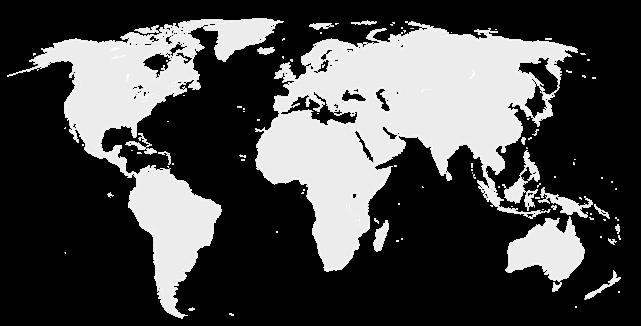

Facts and Figures about the Steel
Industry in Germany



Strengthening Steel Is Key to Securing the Future: Make the Right Choices. Act Decisively.
Steel supports almost every aspect of daily life: from bridges and buildings to trains, cars, bicycles, escalators and even cooking pots. Its strength, versatility and durability provide people with safety, mobility and quality of life. Steel is the indispensable backbone of the modern world. As the foundation of infrastructure, energy supply, transport and defence, steel underpins both the economic sovereignty and sustainable security capability of nations.
Germany still enjoys the major advantage of locally rooted value chains. These strengthen strategic resilience by reducing dependence on geopolitically risky imports, shortening delivery times and ensuring a reliable supply of high-quality steel.
Yet this advantage is at risk. While China, India and the United States have been strategically expanding their steel capacities for decades, the German and European steel industries face enormous pressure as multiple challenges converge.
− Unfair market conditions: There is an increasing wave of biased subsidised imports entering the EU market. Today, one in three tonnes of steel used in the EU comes from third countries.
− Location-related structural disadvantages: High energy costs, which are internationally uncompetitive, pose an existential challenge.
− Dramatic market developments: In 2024, crude steel production fell below 40 million tonnes for the third consectuive year. Since 2017, market volume has declined by around one third due to weak economic growth. Global factors, including U.S. trade policy, are further exacerbating the situation.
Our industrial base is steadily losing substance — with far-reaching consequences for value creation, employment, and technological sovereignty.
What we urgently need now:
1. Long-term effective protection against unfair trade,
2. Internationally competitive energy prices, and
3. Procurement rules that prioritise steel produced in Germany and the EU.
What is required is swift and decisive political action — in Brussels, in Berlin, and in Germany’s steel-producing federal states. The European Steel and Metals Action Plan as well as the coalition agreement of the German federal government provide the right approaches. What is needed now is their long-overdue implementation!
With the current facts and figures on the steel industry in Germany, we aim to support the political decision-making process and hope you find this overview both engaging and insightful.
Yours sincerely,
Kerstin Maria Rippel Director General, German Steel Association
Largest steel producer in the EU and seventh largest globally

Over 2,500 grades of steel for a wide range of applications: from heavy plate to the finest wire
70 percent primary steel — 30 percent secondary steel
Production with best conditions for people and the environment in international comparison
Steel Production Sites
Crude Steel Production in 2024 (total production in Germany): 37.2 million tonnes
(1) ArcelorMittal Hamburg (2) ArcelorMittal Bremen (3) Benteler
(4) Georgsmarienhütte Holding (5) Salzgitter
(6) Brandenburger Elektrostahlwerk
(7) Hennigsdorfer Elektrostahlwerk (8) ArcelorMittal Eisenhüttenstadt (9) thyssenkrupp Steel Europe
(10) HKM
(11) ArcelorMittal Duisburg (12) Deutsche Edelstahlwerke
(13) Buderus Edelstahl (14) Stahlwerk Thüringen
(15) ESF Elbe-Stahlwerke Feralpi (16) BGH Edelstahl
(17) Dillinger Hüttenwerke (18) Saarstahl
(19) Badische Stahlwerke (20) Lech-Stahlwerke
(21) Friedr. Lohmann (22) VDM Metals
(23) Dörrenberg Edelstahl
(24) Kind & Co. Edelstahlwerk (25) Vacuumschmelze
Integrated steelworks (blast furnace, steel and rolling mill)
Steel production based on iron ore (primary steel production)
As of January 2025
Source: WV Stahl

In 2024, 37.2 million tonnes of crude steel were produced in Germany.
Crude Steel Production
In 2024, crude steel production totalled 37.2 million tonnes. Consequently, for the third consecutive year, output remained below the 40-million-tonne threshold, indicating a recessionary level.
Source: Statistisches Bundesamt, WV Stahl
The Manufacturing Industry Is Predominantly Steel-intensive
Nearly 4 million people are employed in Germany’s most steel-intensive industries — representing around two-thirds of all industrial employment in the country.
As of 2024
Source: RWI, Statistisches Bundesamt, Bauhauptverband, WV Stahl

Approximately 4 million people in Germany work in steelintensive industries, around 80,000 for the steel industry directly.
Steel Is Vital for Industrial SMEs
More than one in three people working in medium-sized industrial companies (SMEs) work in steel-intensive sectors. Steel’s importance in terms of value creation is even more impressive: every second euro generated by SMEs depends directly or indirectly on steel.
Importance of the Steel Industry in Germany for Industrial SMEs
2 million jobs in steel-intensive value chains (share: 37%)
443 billion €
production value (share: 51%)
183 billion €
gross value added (share: 50%)
Source: Oliver Wyman/IW Consult
Steel Industry Revenue in Germany
In 2024, the steel industry recorded a decline in revenue for the second consecutive year — down € 5.3 billion compared to the previous year.
*Production of pig iron, steel and ferroalloys, plus manufacture of steel pipes and pipe fittings
Source: Statistisches Bundesamt
Market Supply Rolled Steel
Market supply declined again in 2024, reaching a new historic low. Since the last peak in 2017, steel demand in Germany has fallen by around 14 million tonnes.
Source: WV Stahl, Außenhandelsstatistik
The Most Important Customer Sectors for the Steel Industry
Now as before, the construction, automotive and mechanical engineering industries continue to be the most important customer sectors for the steel industry. The use of low-emission steel helps to further improve the product carbon footprint in these industries.
As of 2024
Source: Eurofer
Contribution of the Steel Industry to Decarbonisation
The steel industry is vital to making Germany a climate-neutral, economically strong location: a transition could reduce Germany’s industrial emissions by 30 per cent. In order to achieve this, the conventional method of primary steel production, the blast furnace-converter route, must be replaced by hydrogen-based direct reduction. In addition, scrap-based electric steel production is an important component of climate-neutral steel production.
Total Greenhouse Gas Emissions in Germany in 2024: 649 million tonnes CO 2
Total industry
Source: UBA, DEHSt, own calculations (WV Stahl)
steel
Thereof
A climate-neutral steel industry means around 50 million tonnes less CO 2 per year.

This corresponds to approx. 30 per cent of all industrial emissions in Germany. And approx. 7 per cent of all CO 2 emissions in Germany.
Climate Protection Impact of Hydrogen Use in Sector
Comparison
In the steel industry, 28 tonnes of CO 2 can be saved per tonne of climate-neutral hydrogen used — more than in any other sector. A key prerequisite for deploying hydrogen in steel production is affordability.
-Reduction Potential per Tonne of Hydrogen (H 2 )
Speci c Saving (t CO 2 /t H 2 )
*Average potential today and in 2050
Source: National Hydrogen Council; calculations by WV Stahl, after obtaining a statement from the Fraunhofer Institute for Environmental, Safety and Energy Technology UMSICHT
Advantage
for the steel
industry: Until climate-neutral hydrogen is available in sufficient quantities and at an affordable price, the steel industry can use natural gas for direct reduction, which offers flexibility. This enables savings of around 60 per cent in CO₂ emissions.

Development of Specific Energy-related CO 2 emissions
Today, significantly less CO 2 is emitted per tonne of steel than 30 years ago. However, this also means that the limits of established production processes have been reached. Thus, in order to achieve climate neutrality, it’s necessary to convert steel production to hydrogen-based processes.
Hot-rolled Products and Semi-finished Product Deliveries in t CO₂ /t Product
Specific primary energy-related CO 2 emissions per tonne of steel, averaged across total steel production, aggregating both the electric steel and the blast furnace–converter route. Without coking plants. Indirect CO 2 emissions from purchased electricity are included.
Source: WV Stahl
Specific Primary Energy Consumption
The energy consumption to produce one tonne of steel has been significantly reduced since 1990. Successes were achieved not only on the integrated production route, but also on the electric arc furnace route. One example of further development is the introduction of the ladle furnace, which enables the electric arc furnace to fully utilise the installed capacity for scrap melting and relieves it of metallurgical tasks.
Hot-rolled Products and Semi-finished Products Deliveries* in GJ/Tonne
Specific primary energy consumption per tonne of steel on average for total steel production, aggregating the electric steel and blast furnace converter routes. Without coking plants.
*Hot-rolled long and flat products and deliveries of semi-finished products for direct use
Source: WV Stahl
Crude steel in GJ/tonne
International Comparison of Electricity Prices
By international standards, electricity prices in Germany are not competitive — neither against the U.S. and China nor within the EU. In many other major countries, either market prices are lower or special industrial electricity tariffs are in place.
Industrial Electricity Prices 2023 in a Global Comparison
Range of electricity prices for large energy-intensive companies including grid fees, levies, and taxes (excluding VAT) including applicable relief schemes
Day-ahead Prices in Intra-European Comparison Index of average price levels from 15 August 2024 to 14 August 2025, with Germany = 100%
Electricity Costs: Twice as High as before the Energy Crisis
With the elimination of the government subsidy for transmission grid fees at the beginning of 2024, these costs have doubled. This currently poses an enormous burden, particularly for scrapbased electric steel production.
Source: Calculations by the German Steel Association for an assumed external electricity consumption of 12 TWh from the public grid, based on publications by BDEW (Electricity Price Analysis February 2024), EEX, and TSOs.
Outlook: Demand for Electricity Is
Rising Significantly
For the steel industry, the shift to climate neutrality entails electrifying processes. Operating both electric arc furnaces and direct reduction plants requires electricity from the grid, while self-generated power in the blast furnace route is increasingly disappearing.
Electricity Demand of the Steel Industry in Germany (in TWh)
*In the event of a 50 per cent conversion of primary steel production to the direct reduction process
Source: WV Stahl

Replacing coal as a raw material with the local factor electricity
Increasing demand for external electricity as a result of further electrification of steel production
Elimination of self-generated electricity from by-product gases from the blast furnace converter process
Low-emission Steel: Big on Climate Benefits, Light on Costs
Climate-friendly steel production substantially lowers emissions along the downstream value chain. The additional cost compared to conventional steel production is minimal relative to the overall cost of the end product.
Source: BCG Analysis 2022
Sustainable Value Creation through Steel
Steel production in Germany ranks among the top international sustainability goals. This has a positive impact on downstream industries. As a study by IW Consult shows, the migration of steel would entail considerable sustainability risks for these industries. If, for example, the mechanical engineering industry had to completely replace its steel supplies from Germany with Chinese imports, CO 2 emissions in the value chain would increase by 13 million tonnes.
Illustration of the Consequences of Sourcing Steel for Mechanical Engineering from China
Changes in CO 2 Emissions
Million Tonnes CO 2
E ect on the Steel Industry Emissions
E ect on Emissions from the Upstream Value Chains of the Steel Industry
Source: IW Consult

Over 80 per cent of the steel industry’s freight in Germany is transported by rail and inland waterways, in an environmentally friendly way.
Logistics
The steel industry has been relying on climate-friendly modes of transport for decades. About 80 per cent of transport volumes are transported by rail or inland waterways. Due to their high transport volumes, steel-producing companies in Germany are extremely important for both rail freight transport and inland waterway transport.
Source: WV Stahl
Steel Foreign Trade: Germany
Since 2022, exports have held steady at roughly 23 million tonnes, whereas imports have fallen to 18.8 million tonnes. Consequently, the trade balance increased to 4.2 million tonnes.
*Steel Mill Products (rolled steel and forged products, pipes, cold-rolled products)
Source: Official foreign trade statistics, WV Stahl
Steel Foreign Trade: EU-27
In 2024, imports from third countries into the EU remained unchanged from the previous year at 39.6 million tons. Most recently, they have risen again and continue to exert strong import pressure.
Source: Official foreign trade statistics, WV Stahl Million Tonnes Steel Mill Products*
*Steel Mill Products (rolled steel and forged products, pipes, cold-rolled products)
EU Steel Market: Demand Falls as Import Pressure Mounts
Since 2023, the gap between actual steel consumption and imports has widened sharply, resulting in reduced capacity utilisation within the EU steel industry. Currently, one in three tonnes of steel used in the EU originates from outside the EU — a significant development.
*Extrapolated on the basis of Jan–Apr 2025
Source: Eurofer
Steel Exports to Countries outside the EU
Steel from Germany and the EU is most often exported to other European countries. As in the past two years, the North American free trade area (USMCA) will again be in second place for German and European exports.
USMCA
Europe excluding EU/CIS
Asia excluding the Near and Middle East
Africa
CIS/Ukraine
Near and Middle East
Others
*Exports of steel mill products (rolled steel and forged products, pipes, cold-rolled products)
As of 2024
Source: Official foreign trade statistics
Indirect Steel Foreign Trade
In 2024, Germany exported around 29 million tonnes of rolled steel abroad in the form of steel-containing goods, such as cars and machinery. However, the balance has declined significantly since the beginning of the decade.
Source: Official foreign trade statistics Trade in Steel-containing Products*
*Steel-containing goods (such as cars, machinery) have been converted into steel weight using a coefficient.
Indirect Steel Exports from Germany by Country
The most important buyer countries for Germany’s indirect steel exports are the USA, France and Poland.
As of 2024
Source: Statistisches Bundesamt, own calculations (WV Stahl)
Steel can be recycled an infinite number of times and up to 100 per cent.

Circular Economy with Steel: Saving Resources, Protecting the Environment and Climate
Steel is 100 per cent recyclable, without any loss of quality. In Germany alone, the steel industry uses around 20 million tonnes of steel and iron scrap every year to produce new products. A well-functioning steel recycling system has already been established in Germany. For example, the collection rate for structural steel at the end of a building’s life is around 97 per cent. All collected steel is recycled.
Source: WV Stahl
Steel is 100 % recyclable –in nitely and without loss of quality.
Raw Materials
Building a Circular Economy with
a Multi-Recycling Approach
Nearly all steel scrap generated in Germany is collected nationwide and completely recycled. Because there is no degradation in quality, these products can also be recycled — a never-ending story. For example, one tonne of steel can be recycled six times to produce four tonnes of new steel products.
Even with a conservative calculation of only 6 life cycles
Real greenhouse gas potential: <1 t CO2-eq. /t steel
The greenhouse gas potential of steel production decreases with each life cycle.
Source: Neugebauer/Finkbeiner, TU Berlin
Slag Utilisation:
Production and Use of Slag
Resource efficiency is a paramount concern for steel companies. By-products such as slag replace primary raw materials and thus help to save resources.
*Difference between slag production and slag use = movement of stock
Source: FEhS
The Top 10 Crude Steel Producers in the EU
More than a quarter of EU steel production comes from Germany — ranking it first ahead of Italy and Spain.
Source: Eurofer
The Top 10 Crude Steel-producing Countries Worldwide
Germany is the 7th-largest steel producer worldwide.

Source: Worldsteel

Despite there already being massive global excess capacity in the steel sector, the OECD expects crude steel production capacities to expand by 165 million tonnes to more than 720 million tonnes between 2025 and 2027, with the focus being on Asia.
Unrestrained Growth in Global Steel Excess Capacity
The problem of coal-based and non-market-driven steel excess capacity continues to grow. The OECD expects steel excess capacity to increase by around 20 per cent to over 720 million tonnes by 2027. This is five times the EU’s steel production. Expansion of production capacity is expected to increase by up to 165 million tonnes over the next three years, with coal-based production routes seeing a significant growth.
By Technologies
Capacity Expansion 2025–2027
By Country/Region
The German Steel Association (Wirtschafts vereinigung Stahl) represents the collective voice of Germany’s steel industry, which has pledged to achieve climate neutrality by 2045. This ambitious commitment has the potential to eliminate approximately one-third of Germany’s total industrial greenhouse gas emissions.

The association contributes its extensive expertise in energy, climate, economic, trade, environmental, and sustainability policies to dialogues at the federal, state, and EU levels.
As a member of the Federation of German Industries (BDI), the European Steel Association Eurofer and the World Steel Association worldsteel, the association focuses on cross-sector European and international networking.
Team

Contact




Gunnar Groebler
President (honorary)
Chief Executive Officer of Salzgitter AG
Kerstin Maria Rippel, LL.M.
Director General
Tobias Aldenhoff
Director Economic and Trade Policy

Dorit Gläser Director Legal and Human Resources

Susan Saß Director Communications and IT

Gerhard Endemann Director Environmental and Sustainability Policy
Roderik Hömann Director Energy and Climate Policy
Thomas Schauf Director Strategy and Governmental Affairs
Studies Comissioned by WV Stahl
Die Stahlindustrie am Scheidepunkt: Wegbereiter für Transformation und gesamtwirtschaftliche Resilienz
Oliver Wyman und IW Consult, Köln, 2024
Dekarbonisierung ohne Deindustrialisierung
Centrum für Europäische Politik, Freiburg/Berlin, 2023
Wertschöpfungskette Stahl: Nachhaltigkeit im internationalen Vergleich
IW Consult, Köln, 2022
Transformationspfade für die Stahlindustrie in Deutschland
Prognos, München, 2022
Klimapolitische Herausforderungen der Stahlindustrie in Deutschland
Prognos, Freiburg, 2020
Stahl-Kreisläufe
Stahl als Enabler der Kreislaufwirtschaft aus der Perspektive der Haushalte in Deutschland
Fraunhofer IMWS, Halle (Saale), 2019
Potentiale des digitalen Wertschöpfungsnetzes Stahl
Die Rolle der Stahlindustrie als Enabler der Digitalisierung der deutschen Wirtschaft
IW Consult, Köln, 2017
Volkswirtschaftliche Folgen einer Schwächung der Stahlindustrie in Deutschland
Prognos, Freiburg, 2016
Die volkswirtschaftliche Bedeutung der Stahlindustrie
Rheinisch-Westfälisches Institut für Wirtschaftsforschung (RWI), Essen, 2015

Wirtschaftsvereinigung Stahl
Französische Straße 8 10117 Berlin
+49 30 2325546-0
info@wvstahl.de www.wvstahl.de
Member of

